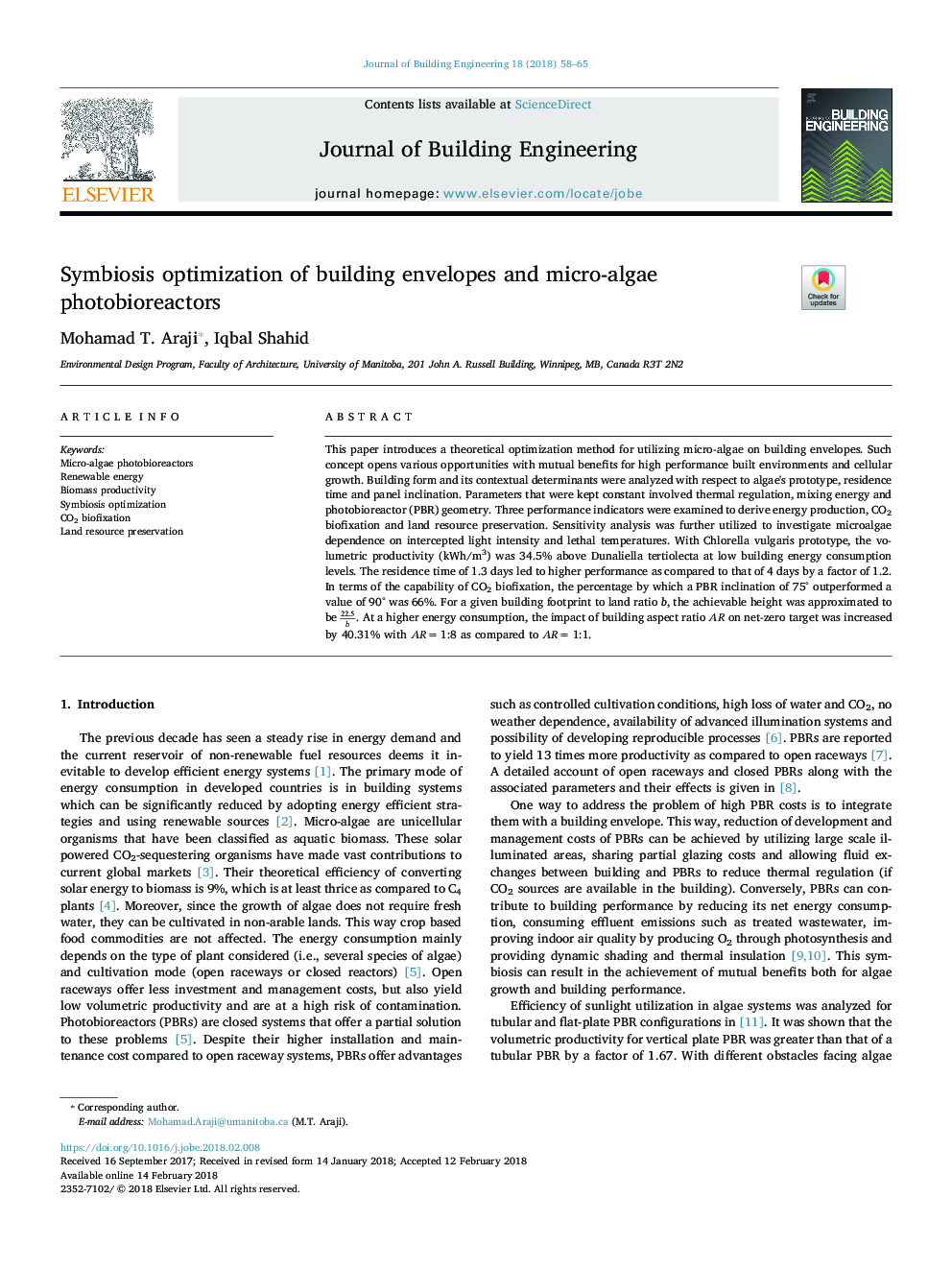| Article ID | Journal | Published Year | Pages | File Type |
|---|---|---|---|---|
| 6749843 | Journal of Building Engineering | 2018 | 8 Pages |
Abstract
This paper introduces a theoretical optimization method for utilizing micro-algae on building envelopes. Such concept opens various opportunities with mutual benefits for high performance built environments and cellular growth. Building form and its contextual determinants were analyzed with respect to algae's prototype, residence time and panel inclination. Parameters that were kept constant involved thermal regulation, mixing energy and photobioreactor (PBR) geometry. Three performance indicators were examined to derive energy production, CO2 biofixation and land resource preservation. Sensitivity analysis was further utilized to investigate microalgae dependence on intercepted light intensity and lethal temperatures. With Chlorella vulgaris prototype, the volumetric productivity (kWh/m3) was 34.5% above Dunaliella tertiolecta at low building energy consumption levels. The residence time of 1.3 days led to higher performance as compared to that of 4 days by a factor of 1.2. In terms of the capability of CO2 biofixation, the percentage by which a PBR inclination of 75° outperformed a value of 90° was 66%. For a given building footprint to land ratio b, the achievable height was approximated to be 22.5b. At a higher energy consumption, the impact of building aspect ratio AR on net-zero target was increased by 40.31% with AR=â¯1:8 as compared to AR=â¯1:1.
Related Topics
Physical Sciences and Engineering
Engineering
Civil and Structural Engineering
Authors
Mohamad T. Araji, Iqbal Shahid,
